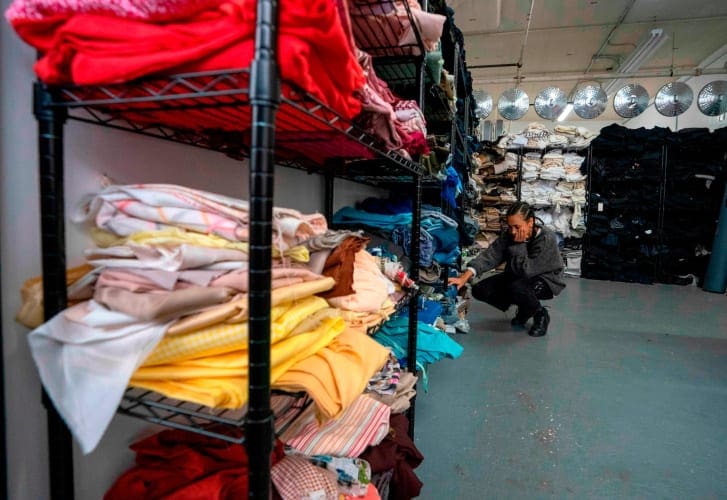Fabscrap, a nonprofit based in New York, gathers, organises and repurposes clothing scraps from the design offices of the city to divert as much recycled material from landfilling or incineration as possible.
Founded in 2016 by its CEO Jessica Schreiber, Fabscrap was created to meet the city’s commercial textile recycling needs. The company works with fashion brands like Oscar de la Renta, Marc Jacobs and Lafayette148, in addition to interior design and entertainment industries.
Schreiber worked at the New York City Department of Sanitation before founding Fabscrap, and was overseeing the city’s clothing recycling programme. While there, Schreiber says several brands came ahead and asked for advice on how to treat their textile scraps, but “there was not one place to handle the sheer volume of what was thrown away.”
The nonprofit has helped solve the issue over the past couple of years — partnering with some 500 brands across New York seeking to reduce their clothing waste. Some designers may feel “a little guilty about how much fabric they are throwing away,” says Schreiber, who added that 8,000 pounds of waste a week is collected by Fabscrap.
One such brand is Mara Hoffman, a design firm dedicated to sustainable fashion practises.
The company is known for integrating recycled fabrics into its designs, such as Econyl (an alternative nylon made from recycled fishing nets) and Repreve (a polyester made predominantly from recycled plastic bottles).
The vice president of sustainability, product and business strategy at the brand, Dana Davis, says Fabscrap helped Mara Hoffman become more sustainable. The label had reached out in 2016 after seeing the amount of textile waste they accrued over time. “Season after season we’re receiving (samples) and it just really piles up and piles up … we were just really overwhelmed with the textile waste.”
When a company is interested in the service provided by Fabscrap, they can sign up online and fill bags with their unwanted textiles. The bags are then collected and taken to the nonprofit office in Brooklyn where items are either weighed and sorted for reuse or recycling. Large remnants of fabric are also offered to design students, artists and artisans, while smaller scraps are shredded and recycled to produce mattress stuffing, insulation and carpet padding.
While Fabscrap does help reduce the amount of textile waste at the design process level, there is still more work to be done. “I hope in 5 years we’re starting to address the source of the waste not just the waste itself,” Schreiber says.
SOURCE: CNNStyle

